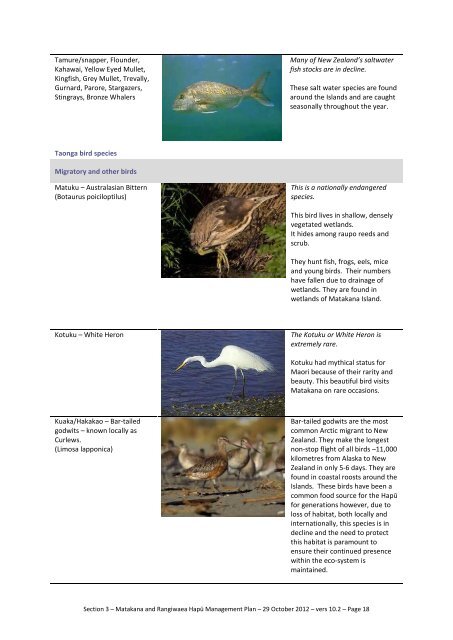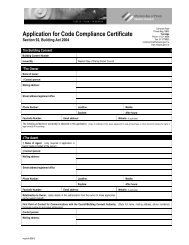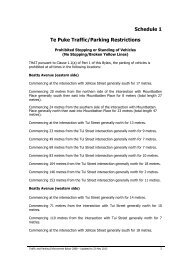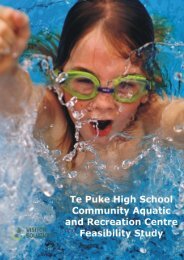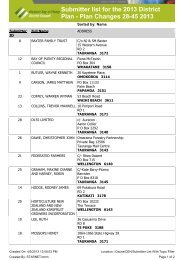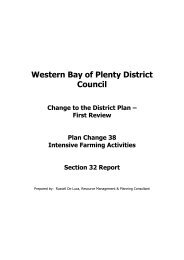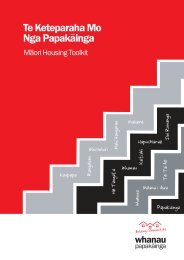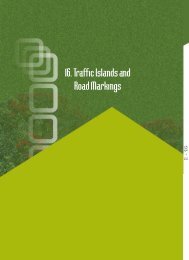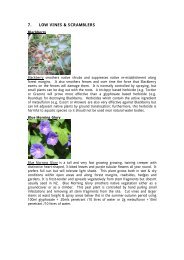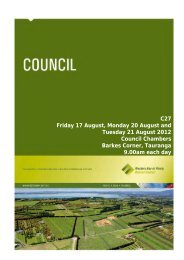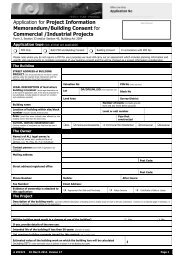Harakeke, Pingao, Kawakawa, Karamu These taonga plants have ...
Harakeke, Pingao, Kawakawa, Karamu These taonga plants have ...
Harakeke, Pingao, Kawakawa, Karamu These taonga plants have ...
You also want an ePaper? Increase the reach of your titles
YUMPU automatically turns print PDFs into web optimized ePapers that Google loves.
Tamure/snapper, Flounder,<br />
Kahawai, Yellow Eyed Mullet,<br />
Kingfish, Grey Mullet, Trevally,<br />
Gurnard, Parore, Stargazers,<br />
Stingrays, Bronze Whalers<br />
Many of New Zealand’s saltwater<br />
fish stocks are in decline.<br />
<strong>These</strong> salt water species are found<br />
around the Islands and are caught<br />
seasonally throughout the year.<br />
Taonga bird species<br />
Migratory and other birds<br />
Matuku – Australasian Bittern<br />
(Botaurus poiciloptilus)<br />
This is a nationally endangered<br />
species.<br />
This bird lives in shallow, densely<br />
vegetated wetlands.<br />
It hides among raupo reeds and<br />
scrub.<br />
They hunt fish, frogs, eels, mice<br />
and young birds. Their numbers<br />
<strong>have</strong> fallen due to drainage of<br />
wetlands. They are found in<br />
wetlands of Matakana Island.<br />
Kotuku – White Heron<br />
The Kotuku or White Heron is<br />
extremely rare.<br />
Kotuku had mythical status for<br />
Maori because of their rarity and<br />
beauty. This beautiful bird visits<br />
Matakana on rare occasions.<br />
Kuaka/Hakakao – Bar-tailed<br />
godwits – known locally as<br />
Curlews.<br />
(Limosa lapponica)<br />
Bar-tailed godwits are the most<br />
common Arctic migrant to New<br />
Zealand. They make the longest<br />
non-stop flight of all birds –11,000<br />
kilometres from Alaska to New<br />
Zealand in only 5-6 days. They are<br />
found in coastal roosts around the<br />
Islands. <strong>These</strong> birds <strong>have</strong> been a<br />
common food source for the Hapū<br />
for generations however, due to<br />
loss of habitat, both locally and<br />
internationally, this species is in<br />
decline and the need to protect<br />
this habitat is paramount to<br />
ensure their continued presence<br />
within the eco-system is<br />
maintained.<br />
Section 3 – Matakana and Rangiwaea Hapū Management Plan – 29 October 2012 – vers 10.2 – Page 18


